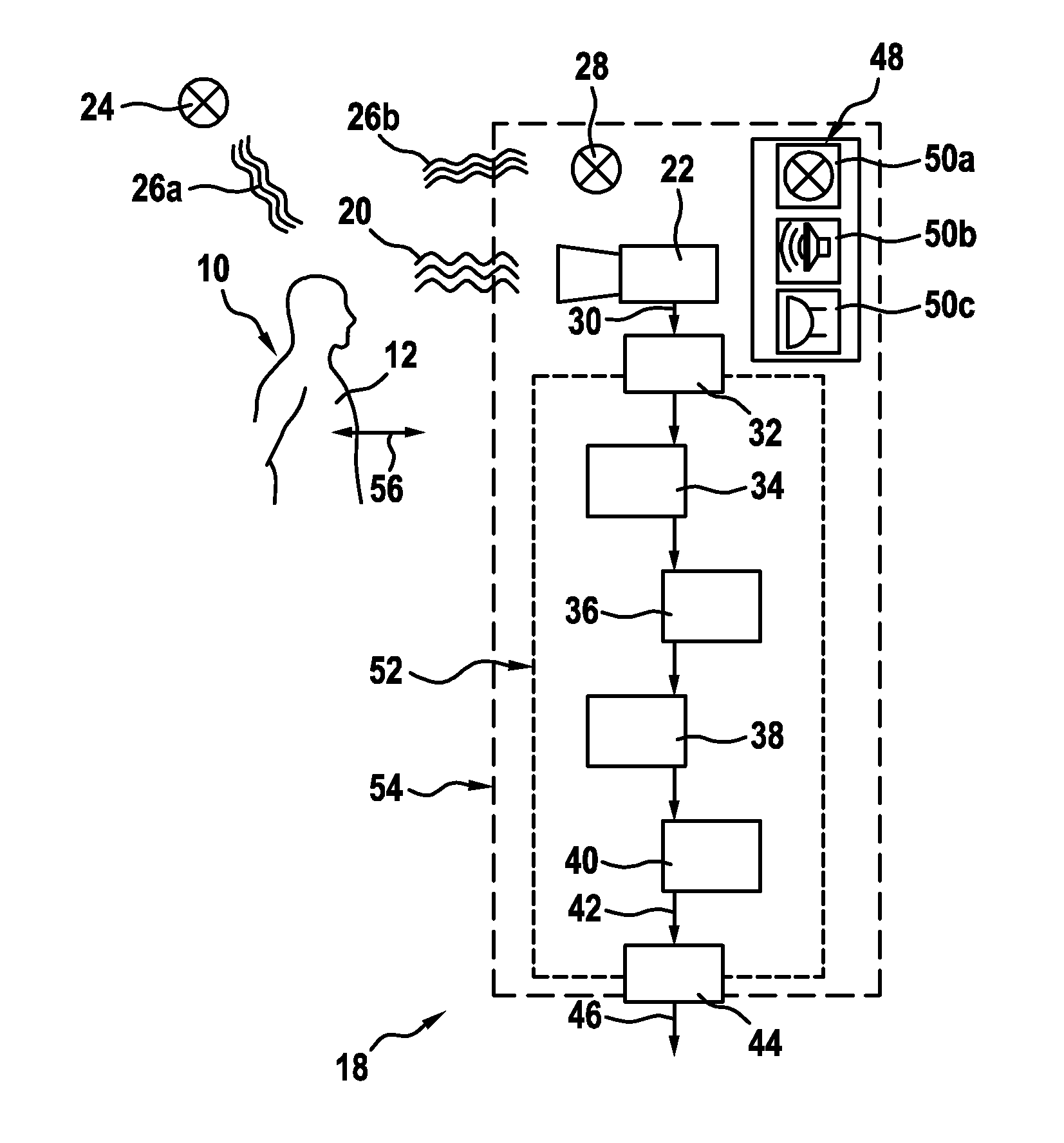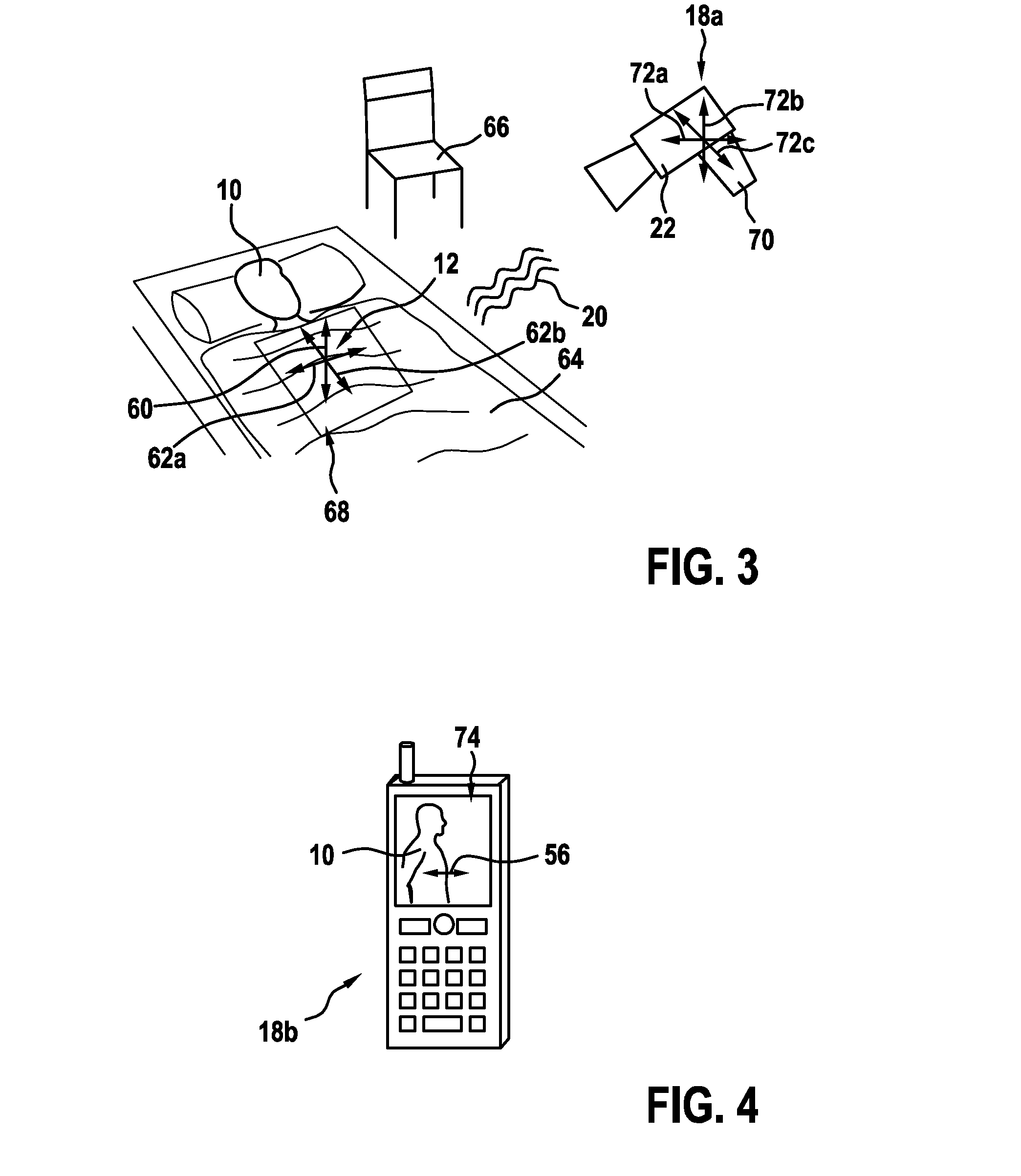Motion robust vital signal monitoring
a vital signal and robust technology, applied in the field of motion robust vital signal monitoring, can solve the problems of difficult monitoring conditions and constraints, difficulty in observing subjects, disturbances and restrictions, etc., and achieve the effect of improving detection accuracy and reliability, and reducing efforts
- Summary
- Abstract
- Description
- Claims
- Application Information
AI Technical Summary
Benefits of technology
Problems solved by technology
Method used
Image
Examples
Embodiment Construction
[0095]FIG. 1 shows a schematic illustration of a subject 10 which experiences motion indicative of a signal of interest. The subject 10 undergoes a characteristic motion of an indicative portion 12 due to respiration. When breathing, expansion and contraction of the lungs or the diaphragm causes slight motion of characteristic portions in living beings, in particular lifting and lowering of the chest. Also abdominal breathing can cause characteristic motion of respective parts of the subject's body. At least partially periodic motion patterns induced by various physiological processes can occurred in many living beings, particularly in humans or animals. Over time, as indicated by an arrow 16, the indicative portion 12 is moved between a contracted position, indicated by reference numerals 12a, 12c, and an extracted position, indicated by reference numerals 12b. By way of the example, based on this motion pattern (herein also referred to as physiological information 56, refer to FIG...
PUM
 Login to View More
Login to View More Abstract
Description
Claims
Application Information
 Login to View More
Login to View More - R&D
- Intellectual Property
- Life Sciences
- Materials
- Tech Scout
- Unparalleled Data Quality
- Higher Quality Content
- 60% Fewer Hallucinations
Browse by: Latest US Patents, China's latest patents, Technical Efficacy Thesaurus, Application Domain, Technology Topic, Popular Technical Reports.
© 2025 PatSnap. All rights reserved.Legal|Privacy policy|Modern Slavery Act Transparency Statement|Sitemap|About US| Contact US: help@patsnap.com



